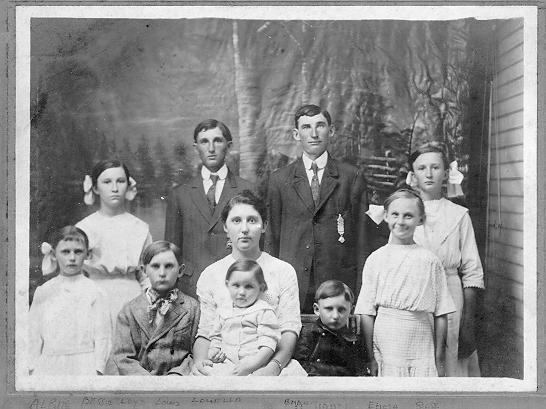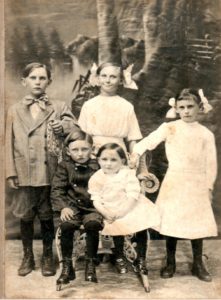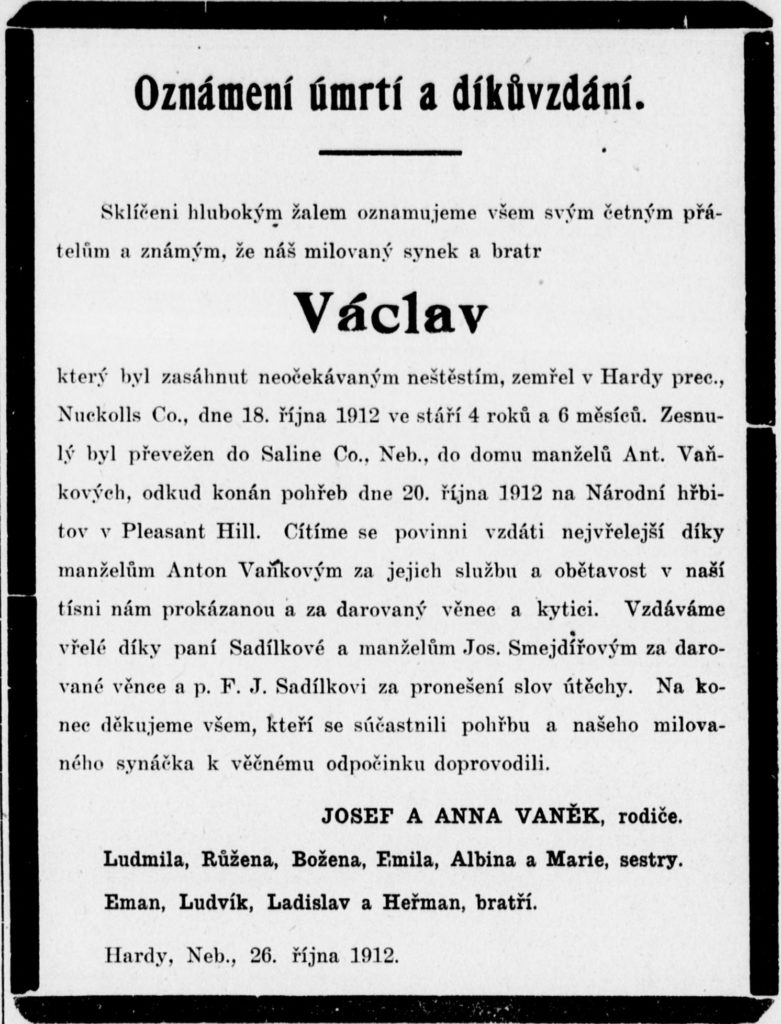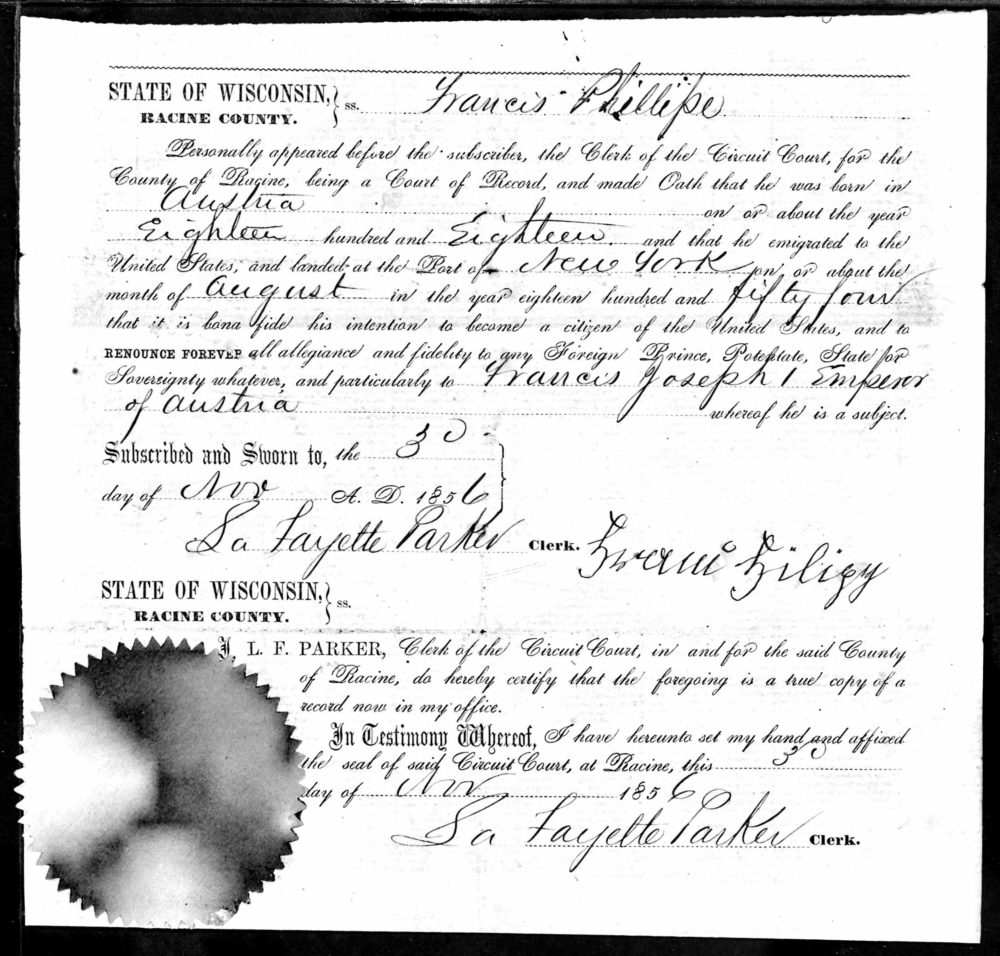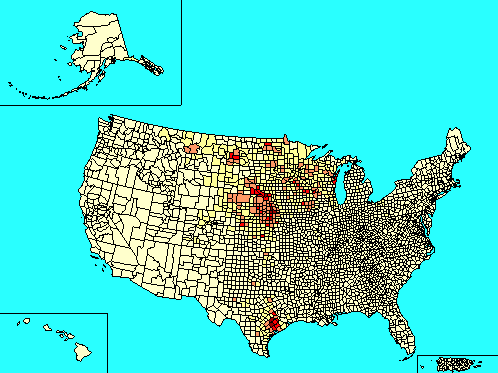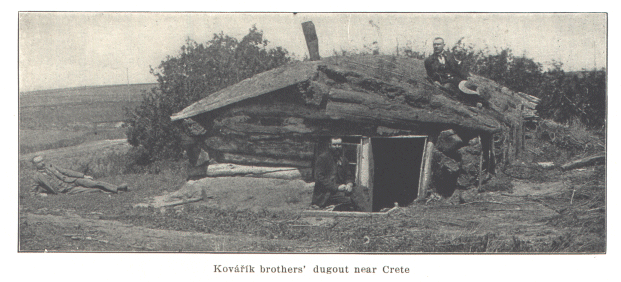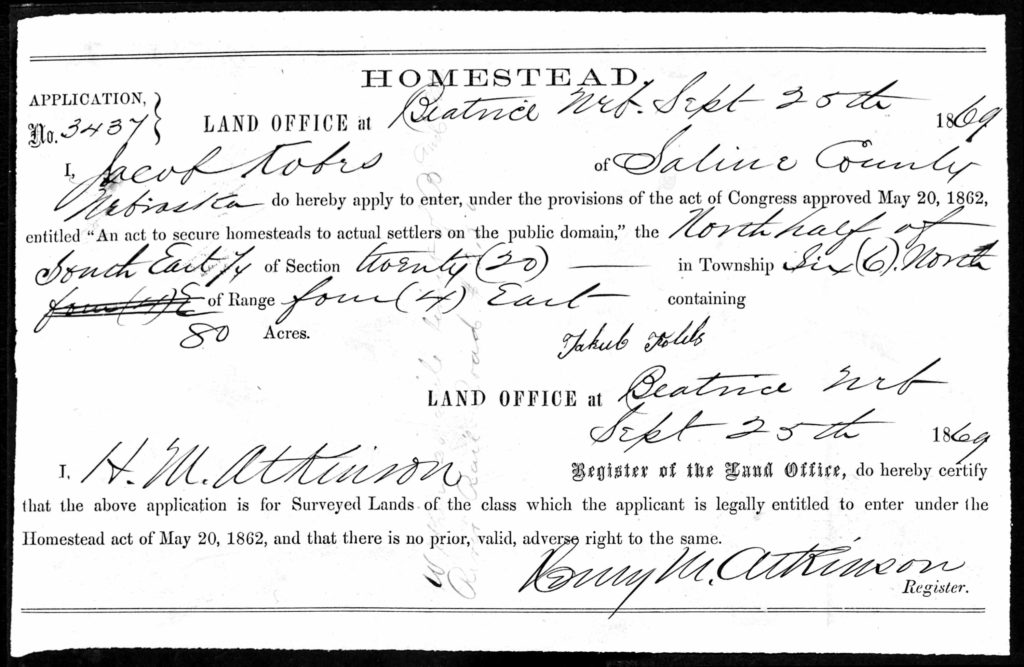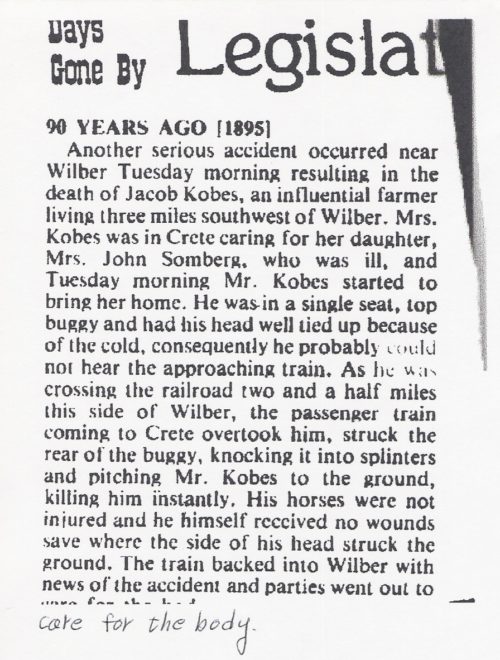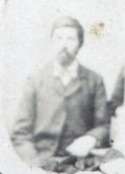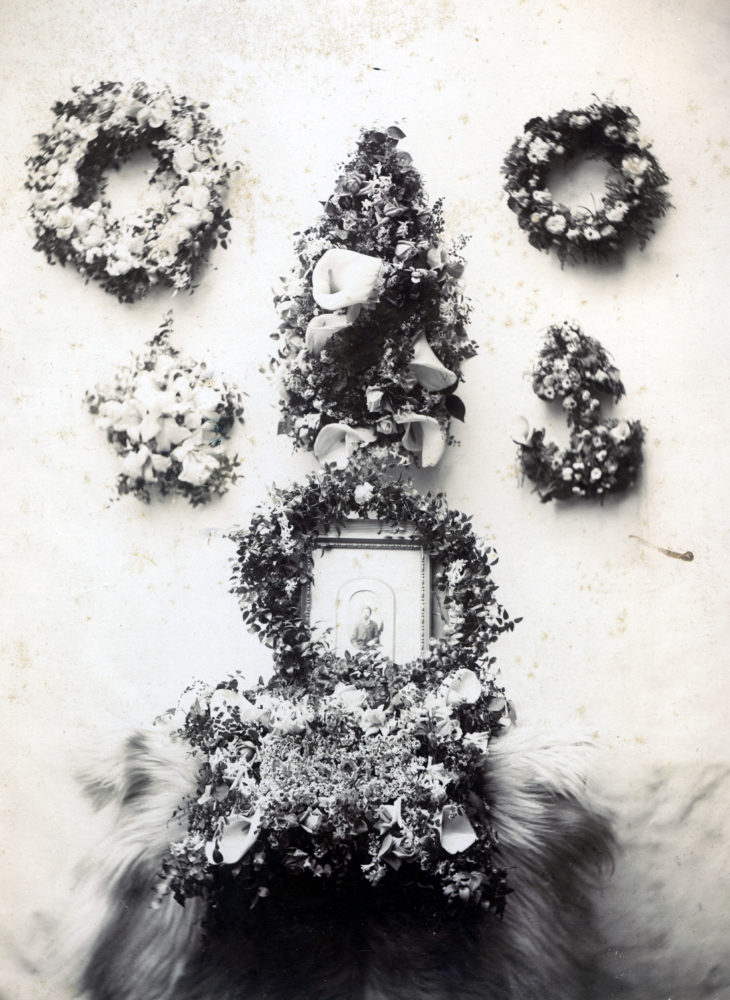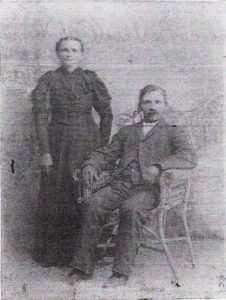
Anna Smith’s life began, it seems, before her parents were quite ready for her. She was born January 11, 1873, probably at the home of her maternal grandparents in Big Blue township, Saline County, Nebraska. Exactly a year and a day later, her parents John Smith and Barbara Papik married in the nearby town of Crete. When Anna was born, her father John was still improving the farm he had claimed under the Homestead Act a few years earlier. It was just across the county line in Lancaster County. After the wedding, Barbara and little Anna moved onto the new farm with him.
Anna’s life had gotten off to an inauspicious start—at least if the moral authorities in the community had anything to say about her illegitimacy. I don’t personally believe in divine retribution for sin—especially not on a person who was the consequence not the cause—but as it would turn out, Anna’s adult life “was filled with more sorrow than with happiness” according to her obituary. She suffered from an illness that carried a deep societal stigma, and it ultimately led to a death that was both slow and painful. Anna is the next subject in the blog series You Died How?, which examines all the unusual ways my ancestors died.
A Vulgar Name?
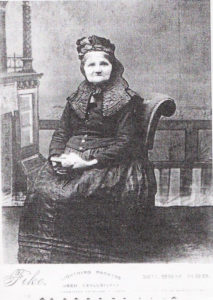
Before we get into the details of Anna’s life and death, a quick note about her name. “Anna Smith” probably strikes you as an uber-generic English name. Our Anna Smith, however, was Czech. Her paternal grandfather was born in 1818 with the name Václav Fucík in the small village of Velká near Milevsko in what is now the region of South Bohemia in the Czech Republic. Václav and his wife Anna Němeček had at least five children between 1842 and 1858, including a son named Johan, Anna’s father.
In 1867, the Fucík family migrated to the United States. The manifest of the Bark Industrie, the ship that carried them across the Atlantic, recorded the German versions of their first names. Václav was written as Wenzel, for example, and František as Franz. Upon entering the United States, they changed names again. Václav became James. Johan became John. The surname Fucík became some version of Smith.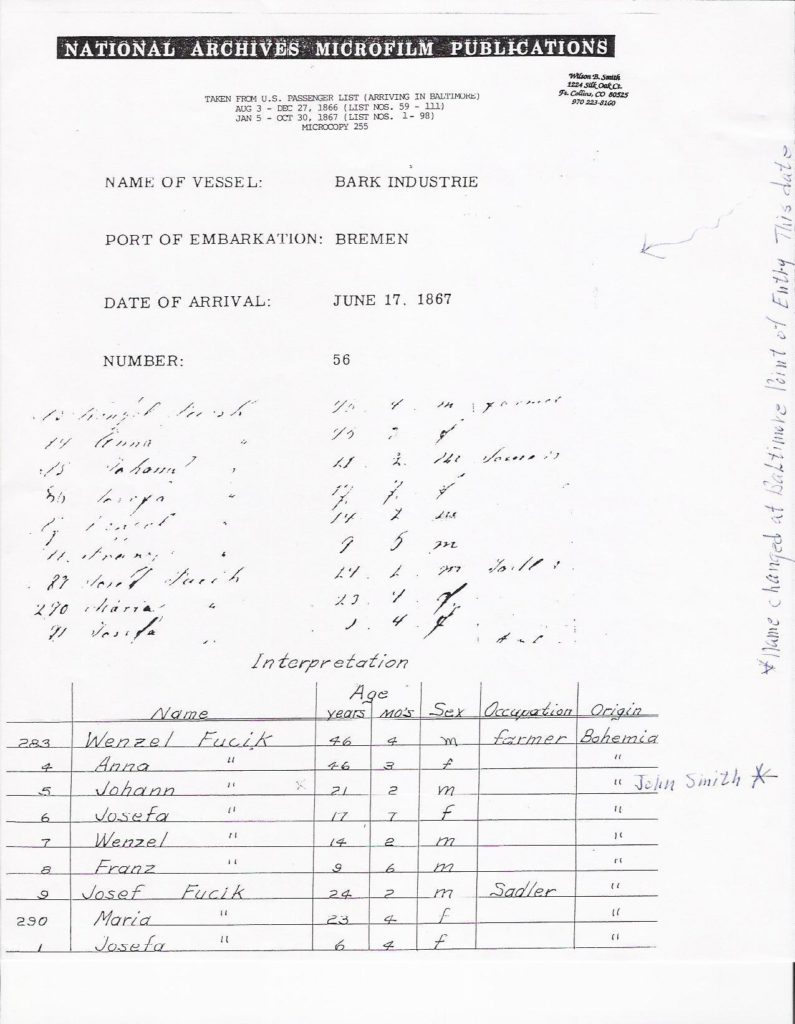
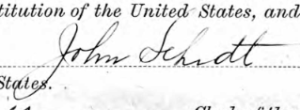
My family, like many, inherited the folktale about the family’s name being changed by officials at the port of entry. Whether it was officials in Baltimore or earlier Czech immigrants who had a grasp of English, someone suggested the Fucíks find a new surname. My hunch is that somebody pointed out how similar Fucík looks in writing to a particularly vulgar English word. (One irony of the name change, if indeed it was due to its similarity with “f***”, is that Johan Fucík/Smith’s official Certificate of Naturalization twice recorded the misspelled surname “Schidt”.)
According to a note written by John Fucík Smith’s granddaughter Emma Vanek Clark, the name Smith was assigned because John was a blacksmith. In fact, there is no evidence any of the men in the family were blacksmiths. The ship manifest records Václav as a farmer and eldest son Josef as, perhaps, a saddler. All four of the Fucík sons became farmers in America.
Whatever the reason, Václav Fucík became James Smith and the rest of the family followed suit. Ever since, all of Václav’s male-line descendants have carried the non-Slavic name Smith, including his granddaughter Anna.
A Life of Sorrow
Anna Smith grew up on her father’s homesteaded farm in Olive Branch Township, Lancaster County, Nebraska. We know very little about her early years, except that she must at a young age have been required to help her mother care for her many siblings. Eight more children blessed the Smith home, with Barbara giving birth every second or third year until 1892. Thankfully, all of them survived to adulthood. Anna’s parents did reasonably well on their farm, but they were never among the most prosperous families in the area.
Anna’s formal education was minimal. She attended some school alongside her younger siblings, but it appears her responsibilities at home limited her achievement. According to the 1900 census, Anna had not yet learned to speak English. Both of her parents and all of her siblings could. As long as she lived in the predominantly Czech area around the town of Crete, language would not be much of an issue. But that would not always be the case.
On June 4, 1892, Anna married Joseph Vanek. Joseph and his family were more recent arrivals than the Smiths. Joseph had been born in Bohemia in 1869 and had come to America with his parents and two brothers in 1883. Joseph’s teen years were spent on a farm several townships west of the Smiths. I presume the couple met either through mutual acquaintances or at Czech social gatherings in the primary market towns of Crete and Wilber. The wedding took place in Wilber with Anna’s uncles Joseph and Frank Smith serving as witnesses. After the celebration, the newlyweds moved onto 80 acres of farmland in western Saline County. Anna’s new home was more than 25 miles from the farm of her parents and siblings. At least most of their neighbors were still Czech.
The most life-changing event in Anna’s life probably occurred a year or two before the wedding when she suffered her first seizure. It probably struck her while she was a teenager still living at home with her parents. Even today, epilepsy is a mysterious illness and seizures a startling thing to witness. In the 1890s, people knew far less about the disease and the social stigma was significantly greater. Anna’s illness, bouts of which apparently recurred quite frequently, affected her for the remainder of her life. It significantly limited the relationships she had with other people.
Epilepsy did not, however, limit Anna’s fertility. She was almost always pregnant, giving birth to 15 children in just over 20 years. Unfortunately, even her children were a source of sorrow. Anna and Joseph’s very first child, whose name is unknown, died in infancy. Their sixth child, too, spent a heartbreakingly short time on Earth. Seven more healthy children followed before their last two children also died in infancy. Without a strong social network, Anna’s children were her dearest companions. The deaths of so many of her children as infants put even more burden on Anna’s already distressed psyche.
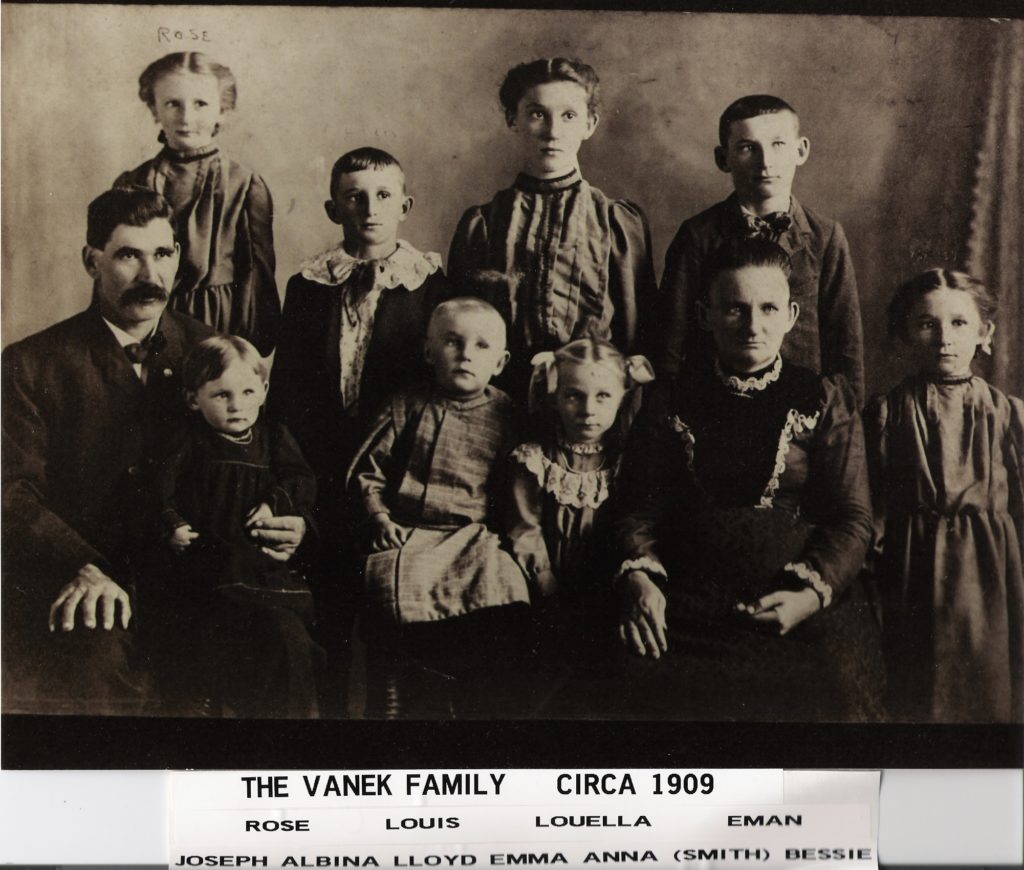
Joseph and Anna had limited options, but they were always looking for ways to improve Anna’s outlook. In 1906, they decided to move. “Thinking that a change of surroundings might be of benefit to his wife’s health,” states Anna’s obituary, Joseph sold the farm in Saline County and bought another one about 70 miles southwest in Nuckolls County, Nebraska, near the Kansas border. The tradeoff for new scenery was that their new farm was well beyond the area of Czech settlement. With no one else around who spoke her language, Anna became extremely lonely. “She missed her parents, brothers, sisters, and people who spoke her language,” continues her obituary. “She was not able to go out much, but was always glad to have people see her.”
And then little James died. James Vanek, called Václav at home after his grandfather, was the couple’s eleventh child. He was born in about April 1908 at the new farm in Nuckolls County. Despite his stern look in the photograph below, he was apparently a sweet boy. His mother had grown quite fond of him before a neočekávaným neštěstím—an “unexpected calamity”—struck him dead in October 1912 at age four-and-a-half. Family lore says he died in a farming accident. Anna’s obituary made special note of James and the affect his death had on a woman who already had more than her share of sorrow. After mentioning the four children Anna lost in infancy, it reads, “and one boy, little James, was accidentally killed at the age of five. Mrs. Vanek seemed to grieve a great deal over the loss of this boy.”
|
|
|
A Long, Painful Death
After moving to Nuckolls County, Anna “continued in poor health until her death,” a span of more than a decade. For a woman who had already suffered so much, one would have hoped that her death, when it came, would be quick. Alas, Anna faced more than three months of misery before the end finally came.
In mid September 1920, Anna suffered another seizure. It was probably no different than the ones she had regularly experienced over the previous thirty years. This time, however, she was not able to get to a safe place. Her death certificate explains what happened, though it is difficult to read on account of the doctor’s handwriting and the number of lines he squeezed into a small space. What I can make out is that a week previous to the doctor’s first visit on September 18, Anna had a seizure that resulted in a “severe scald (burn of right side back and neck . . . .” One can imagine Anna cooking at her potbelly stove when she suddenly collapsed on top of it, severely burning one side of her body.
The doctor treated her burns but they eventually became infected. Day after day she suffered as her wounds tried to heal. The doctor’s notes read, “at least 10 days [illegible] infection until last 10 days [illegible] many burns [illegible] . . .” as the infection slowly spread. Finally, on November 19, 1920, her body gave up.
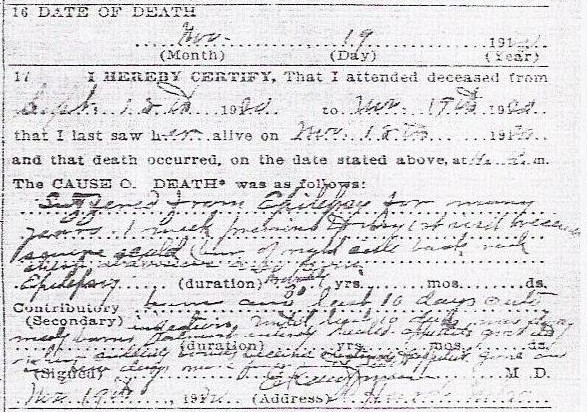
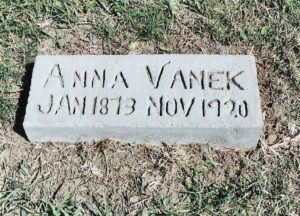
Anna was just 47 years old. She was survived by both of her parents and all eight of her siblings.
The obituary, which I have quoted several times above, was obviously written by her grieving husband Joseph. The writing expresses far more pathos than was typical for an obituary from this era. Reading it, one senses how much Joseph recognized Anna’s fortitude and how much he loved spending time with her despite the limitations of her illness. One also senses that Anna’s death was in many ways a relief, not least for Anna herself. No more violent seizures. No more shame or social anxiety. No more loneliness. Just peace.
It Could Have Been Worse
When I think about Anna’s life, I am reminded how lucky I am to be healthy, educated, and surrounded by loyal friends. Anna had none of these things. She didn’t so much live as persevere. I admire her for the care and devotion she put into the few relationships she did have. I have a lot of admiration for Joseph Vanek, too, for his strength in dealing with his wife’s illness. He was involved more than most fathers of his day in rearing his children. When Anna died, six children still lived at home with him. He never remarried. Anna was fortunate to have such a devoted husband and father.
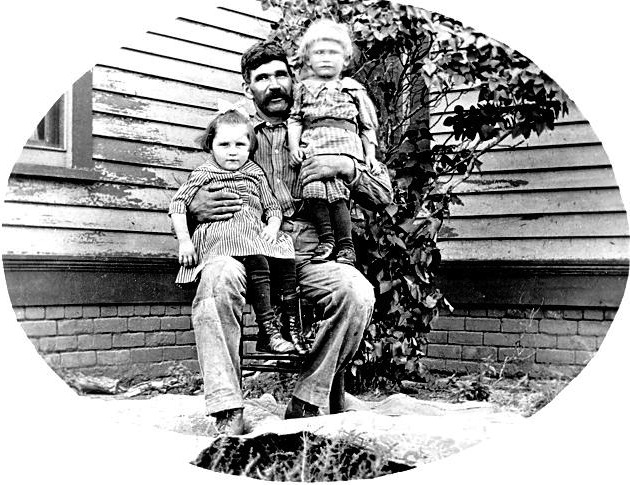
Anna was fortunate from another perspective, too. Had she been born a generation or two later, in the 1890s, 1900s or 1910s, the state or federal government might have sterilized her against her will. Epileptics were commonly included in eugenics legislation that became widespread during the 1910s and 1920s. (Nebraska passed a number of eugenic sterilization laws, but none of them applied to epileptics.) Some states did not go quite as far as forced sterilization, but they nonetheless prevented epileptics from marrying and having children. If Anna had been sterilized or prevented from marrying, her ten surviving children never would have been born and her many hundreds of descendants would not be here today.
Proponents of eugenics for epileptics presumed that the cause of the disease was genetic. They believed they were “purifying” the gene pool and “improving” humanity by removing disease-causing genes. We now know that only in rare cases is epilepsy caused by a single underlying genetic mutation. Most of the time, its cause is more complicated. Sometimes, epilepsy is the result of an undiagnosed brain infection, stroke, or past head trauma. Usually, the cause is a complex of genetic factors and environmental stimuli. More than different 200 genes have been identified that are sometimes associated with epileptic seizures. How these genes interact with each other and with sensory inputs remains the cutting edge of research.
In short, the state-sponsored eugenics of the past was based in ignorance and its measures were extreme, like using a sledgehammer when a scalpel was called for. The collateral damage was immense. It remains perhaps the most striking American example of unnecessary government involvement in citizens’ private lives. The government forcibly prevented thousands of people from having children by destroying their God-given reproductive biology.
At the same time, the impulse behind eugenics doesn’t seem so bad; the goal to eliminate disease and improve human lives is nearly universal. And there have been some noted successes. For example, voluntary genetic testing has been used to discourage marriages between carriers of the recessive gene for Tay-Sachs disease, leading to a significant reduction in the occurrence of the child-killing disease among Ashkenazi Jews in North America.
The debate over the ethics of eugenics continues today. It is philosophical, political, and scientific. It lies at the heart of debates over pre-natal testing, abortion, and genetic engineering of humans and human organs. The lesson to take from last century’s eugenics programs is that we must move forward with caution, taking extra care not to ruin lives in an effort to save them. Anna Smith’s epilepsy was apparently not a case of simple genetic mutation. As far as I am aware, none of her descendants has since suffered from epilepsy. Preventing her from having children would not in any way have “improved” humanity. I, for one, am thankful she had children.
